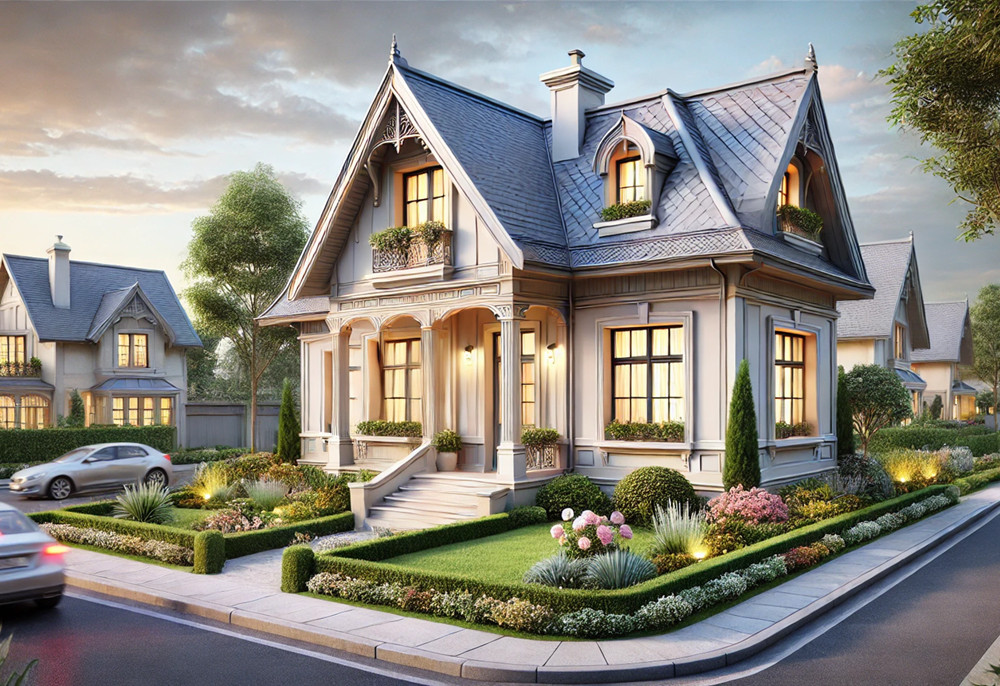As light steel structure homes gain popularity, many people are concerned about how well they perform in different environmental conditions. One common question is, “Are light steel villas susceptible to flooding?” This is especially important for regions with abundant rainfall or frequent flooding, where the waterproofing and moisture resistance of a structure are critical. This article will explore the characteristics of light steel structures, waterproofing techniques, and how light steel villas actually perform in humid conditions to answer this question.

Characteristics of Light Steel Villas — Water Resistant, but Not Waterproof
Light steel structures have gained popularity not only because they are lightweight and have excellent seismic resistance but also because of their durability. The steel used in light steel structures is typically galvanized and treated to resist corrosion, allowing it to last for decades under normal humidity conditions. Compared to wood-framed buildings, light steel structures have a natural advantage in moisture resistance. However, it’s essential to note that being moisture-resistant doesn’t make light steel villas fully waterproof. While they don’t easily get damaged in humid environments, additional protective measures are needed when exposed to flood situations.
Waterproof Design in Light Steel Villas — Enhanced Water Resistance with Multiple Measures
Modern light steel villas are equipped with several waterproofing design features to handle sudden flooding or water accumulation. These measures include:
1. Foundation Waterproofing: The foundation is a critical point for flood prevention in light steel villas. During construction, a waterproof layer is often applied between the light steel frame and the foundation to prevent surface water from seeping into the structure. Foundation material choice and the height of the foundation are also adjusted based on the environment to minimize flood risk.
2. Moisture-Resistant Walls: The walls of light steel villas usually use composite panels with insulation, waterproofing, and decorative layers. Exterior wall designs incorporate waterproof coatings or moisture barriers that effectively block water vapor penetration. Even if flooding occurs, these layers prevent water from entering the wall’s interior, safeguarding the structure.
3. Drainage System: A well-designed drainage system is essential for light steel villas. This includes roof drainage, ground drainage, and even underground drainage in some cases. In areas with heavy rainfall, special attention is given to roof slope, gutter width, and height during design to ensure effective water discharge, minimizing the risk of water accumulation.
4. Material Selection: Building materials are chosen to enhance water resistance further. Besides galvanized steel studs, other materials like wall panels, floor materials, and windows are made from water-resistant, corrosion-resistant materials, enhancing the water resilience of light steel villas from the ground up.
How Light Steel Villas Perform in Flood-Prone Environments
The performance of light steel villas in flood-prone environments depends on several factors, such as flood height, duration, and drainage conditions. In minor water accumulation situations, the waterproofing design usually prevents damage to the villa’s interior. However, in severe flood situations where water remains for a long time, the structure may still be affected to some extent. Therefore, when planning and selecting a site, it is recommended to avoid low-lying areas prone to flooding to ensure the villa’s safety.
In real-world cases, some light steel villas in flood-prone areas have withstood water challenges, with the interior remaining largely unaffected thanks to the waterproofing and thoughtful design. Homeowners noted that the villa quickly returned to normal after water receded, thanks to the moisture-resistant properties of light steel and the practicality of the architectural design.
Regular Maintenance and Inspection — Preventing Future Issues
While light steel villas are durable and built with waterproofing measures, regular maintenance is still essential to keep them in optimal condition. Before the rainy season, inspecting the roof, gutters, and waterproof layers is crucial. Clearing out debris from the drainage system ensures smooth water flow and lowers the risk of flooding. Additionally, in particularly humid areas, homeowners may consider inspecting and maintaining the foundation waterproofing every few years to further extend the villa’s lifespan.
Are Light Steel Villas Suitable for Rain-Prone Regions?
Yes, light steel villas are suitable for rain-prone and humid regions. Compared to traditional wood-frame structures, light steel does not easily warp or deform from moisture. It also outperforms concrete structures in terms of earthquake resistance and construction efficiency. With well-designed waterproofing, light steel villas can provide an enjoyable living experience in humid climates. The galvanized steel components resist corrosion effectively, allowing residents to live comfortably without worry.
Conclusion
Light steel villas are not inherently afraid of flooding. With reasonable waterproofing measures considered during the design, site selection, and construction phases, they can withstand typical moisture and flooding conditions. For families living in humid areas, light steel villas not only offer superior moisture resistance but also provide a comfortable, beautiful, and environmentally-friendly living experience. With professional waterproofing design and regular maintenance, the durability and longevity of light steel villas will exceed expectations.